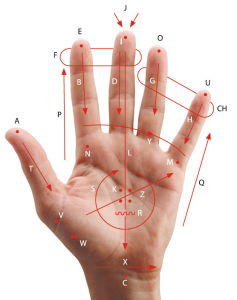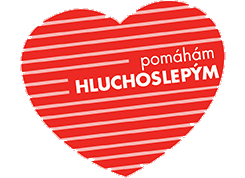About Deafblindness
Deafblindness is a combination of sight and hearing loss, often associated with aging or injury. The loss of both senses may be partial or complete. This handicap causes difficulties especially in communication, orientation and mobility, self-care and access to information. It prevents a deafblind person from full participation in society and it requires professional services, aids and adaptations of environment.
A deafblind person can be recognized on the street by white cane with red stripes, which serves when moving around the public squares, streets and crossings. The general public does often confuse the red and white cane with the white cane for blind people. Then they treat a deafblind like a blind person, which can lead to misunderstandings.
Method of communication with a deafblind person depends primarily on the extent of his disability. Most attention is needed by people with congenital deafblindness and acquired total deafblindness. These people can communicate for example using the touch Lorm alphabet (from which the name of our association derives) by touching the palm. Each touch point corresponds to a specific letter.
Hieronymus Lorm, the original name of Heinrich Landesmann (1821 – 1902), deafblind poet, philosopher and journalist, was a native of the South Moravian town of Mikulov. When he turned fifteen, he suddenly became deaf and then his eyesight deteriorated. In 1882 he lost his sight completely. He created for his own use the touch alphabet. Six years after his death the alphabet was published and subsequently spread throughout Europe.



